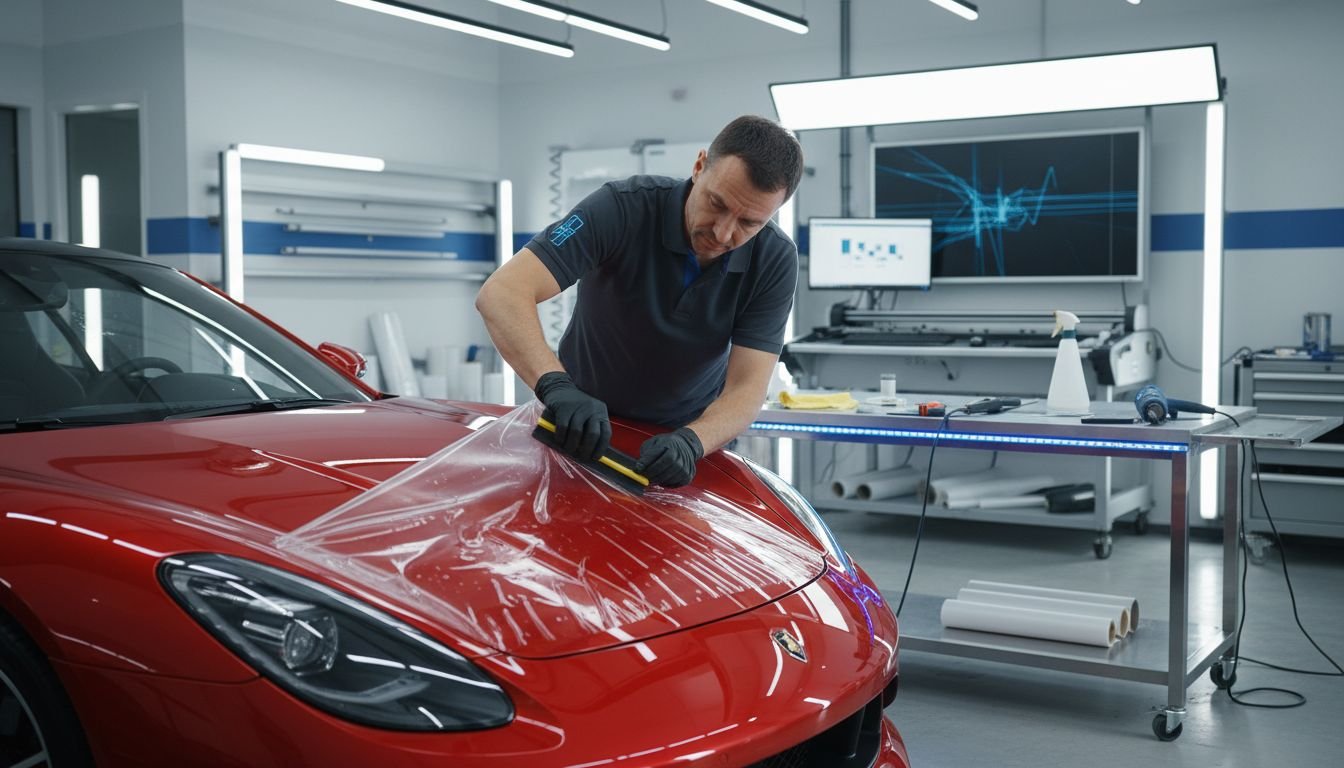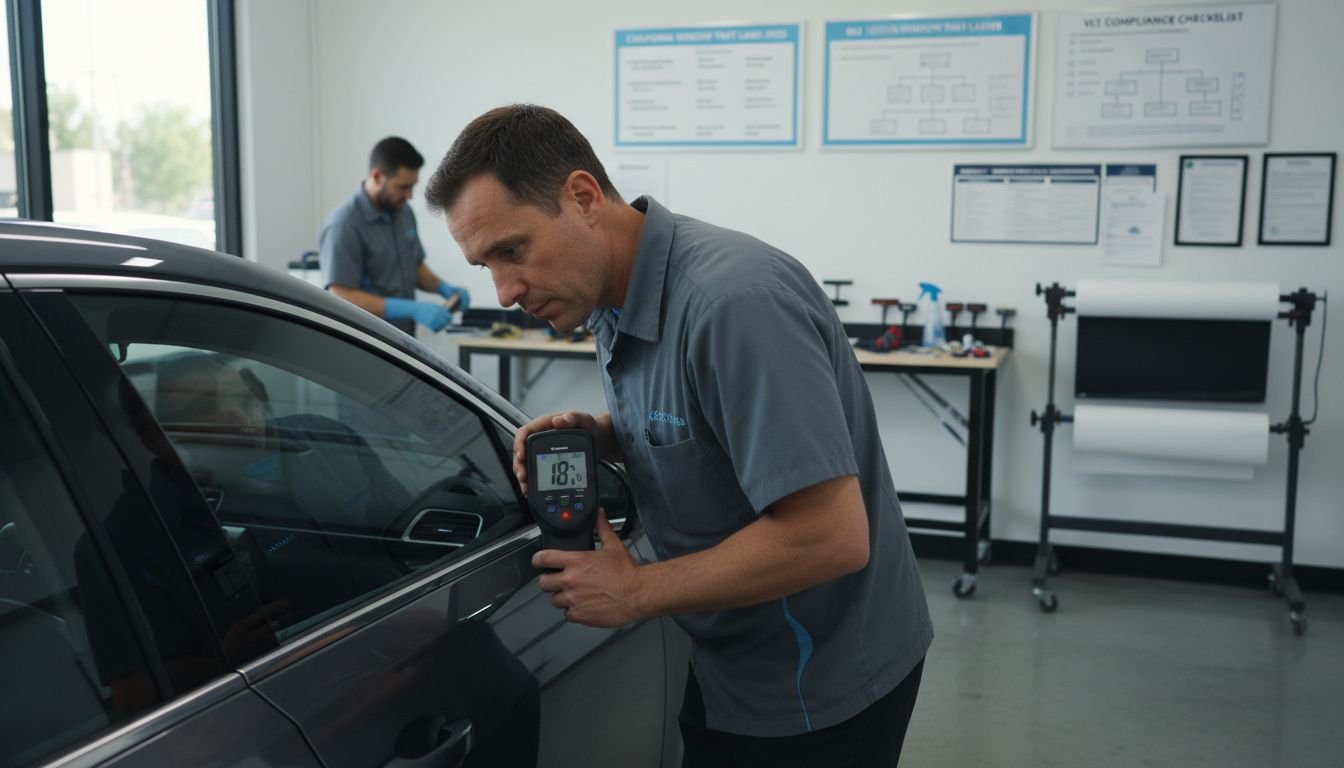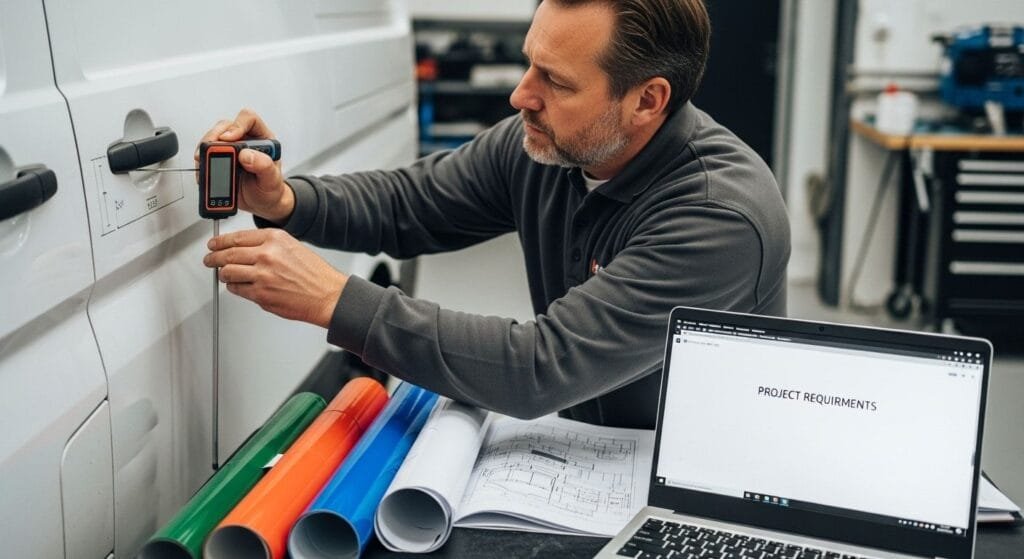
Planning the cost of a vehicle wrap project can feel overwhelming. The difference between estimates can be staggering. Premium vinyl options can drive material prices as high as 25 GBP per square metre and skilled technicians may charge up to 120 GBP per hour. Most people fixate on the wrap itself and overlook the expenses hiding in plain sight. Overhead, material overage, and even temperature in the workshop can quietly transform your final bill. Learning how to break down every cost with sharp precision is the real way to safeguard both your bottom line and your reputation.
Table of Contents
- Step 1: Gather All Project Requirements
- Step 2: Calculate Material Costs Accurately
- Step 3: Determine Labour Costs Based On Time Estimates
- Step 4: Include Overhead And Miscellaneous Expenses
- Step 5: Review And Adjust Your Cost Estimate
- Step 6: Finalise Your Project Cost Proposal
Quick Summary
| Key Point | Explanation |
|---|---|
| 1. Gather Detailed Project Requirements | Start by measuring the vehicle accurately, noting dimensions and configurations that affect material needs and costs. |
| 2. Calculate Material Costs Precisely | Select appropriate vinyl, measure coverage accurately, and include a buffer to avoid shortages and budget overruns. |
| 3. Estimate Labour Costs Accurately | Break down estimated hours required for installation by vehicle size, round estimates with contingencies to ensure competitive pricing. |
| 4. Include Overhead and Miscellaneous Expenses | Account for operational costs proportionally to each project, ensuring financial stability across multiple installations. |
| 5. Review and Adjust Cost Estimates | Conduct a final audit of all costs, using historical data and risk assessments to refine the proposal before client presentation. |
Step 1: Gather All Project Requirements
Estimating project costs for vehicle wraps begins with a comprehensive requirement gathering process that sets the foundation for accurate financial planning. Professional installers understand that meticulous preparation prevents costly miscalculations and unexpected expenses throughout the project lifecycle.
The initial phase requires collecting detailed information about the specific vehicle wrap project. Start by conducting a thorough vehicle assessment, measuring the precise dimensions of the vehicle surface area. This means carefully documenting the make, model, year, and specific body configuration, as these factors significantly impact material requirements and overall project complexity. Professional installers recommend using digital measurement tools or laser measuring devices to ensure absolute precision during this initial evaluation.
Next, determine the comprehensive scope of the vehicle wrap. Are you performing a full wrap, partial wrap, or targeting specific vehicle panels? Each approach carries different material and labour cost implications. Full wraps will naturally require more vinyl material, increased labour hours, and potentially more complex design preparation compared to partial wraps. Consider additional factors like vehicle surface condition, existing paint quality, and potential preparation work needed before applying the wrap.
Client consultation represents another critical component of requirement gathering. Engage in a detailed discussion to understand aesthetic preferences, performance expectations, and budgetary constraints. Some clients might desire premium metallic or textured vinyl materials, while others prioritize cost-effectiveness. Document these preferences meticulously, as they directly influence material selection and overall project pricing.
According to Virginia Department of Transportation, successful project requirement gathering involves identifying potential risks and understanding environmental considerations. For vehicle wraps, this means evaluating potential challenges such as:
- Complex vehicle geometries
- Surface imperfections
- Temperature and humidity conditions
- Potential material compatibility issues
By systematically documenting these requirements, you create a robust foundation for accurate cost estimation, ensuring transparency and minimizing unexpected financial surprises during the vehicle wrap project.
Step 2: Calculate Material Costs Accurately
Accurate material cost calculation represents the critical financial cornerstone of any vehicle wrap project. Professional installers understand that precise material estimation prevents budget overruns and ensures profitability. This step transforms the detailed requirements gathered previously into a concrete financial blueprint for the entire project.
Begin by selecting the appropriate vinyl material based on the client’s specifications and vehicle characteristics. Professional-grade vinyl comes in various qualities and price ranges, with prices typically fluctuating between 12 to 25 GBP per square metre depending on material complexity and finish. Premium metallic or textured vinyl will significantly increase material expenses, so carefully match the material selection to both client expectations and project budget constraints.
Calculate the total surface area requiring coverage with extreme precision. This means measuring not just the visible exterior panels but accounting for potential overlap, complex curves, and potential waste factors. Experienced installers recommend adding a 15-20% material overage to account for cutting errors, complex surface contours, and potential repositioning during installation. This buffer prevents unexpected material shortages and reduces project stress.
Breakdown your material cost calculation into specific components. Include not just the primary vinyl wrap material, but also essential supplementary materials such as:
- Primer and surface preparation solutions
- Edge sealing tapes
- Cleaning solutions
- Specialized cutting blades
- Protective overlaminates
Digital tools can significantly streamline this calculation process. Learn more about precision material estimation techniques that can help reduce waste and improve cost accuracy. Modern cutting software provide
The following table summarises the main project cost components for vehicle wraps, providing quick reference for key elements, recommended allocation, and considerations as described in the article.
| Cost Component | Typical Allocation/Range | Key Considerations |
|---|---|---|
| Material Costs | 12-25 GBP per sq metre | Choose vinyl type, add 15-20% overage |
| Labour Costs | 6-14 hours; 60-120 GBP/hr | Varies by vehicle size and complexity |
| Overhead Expenses | 15-25% of total project cost | Facility rent, utilities, insurance |
| Miscellaneous Expenses | Variable | Cleaning, transportation, software, etc. |
| Contingency | 10-15% buffer | Covers unexpected complexity or delays |
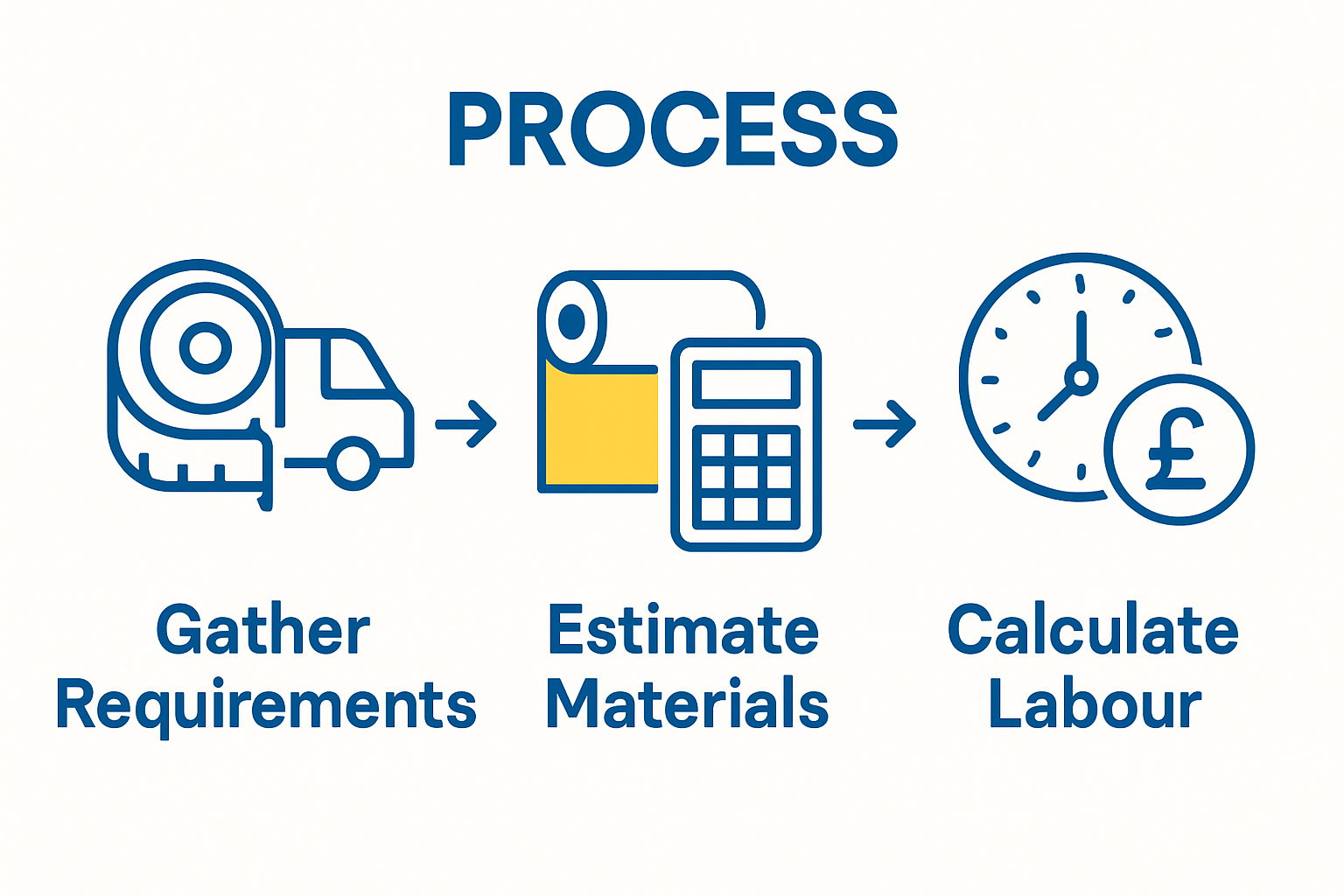
s advanced nesting algorithms that optimize material usage, potentially saving up to 20% on material expenses.
Verify your calculations by cross-referencing material requirements with multiple suppliers, checking current market prices, and considering bulk purchasing options. Professional installers maintain relationships with multiple vinyl manufacturers to ensure competitive pricing and material availability. The final material cost calculation should provide a transparent, itemized breakdown that clients can easily understand and trust.
Step 3: Determine Labour Costs Based on Time Estimates
Labour cost estimation represents a critical financial component that directly impacts project profitability and client pricing strategies. Professional vehicle wrap installers understand that accurate time tracking transforms raw labour hours into precise monetary calculations, ensuring fair compensation for technical expertise and craftsmanship.
Begin by developing a systematic time estimation process that considers vehicle complexity and wrap specifications. Standard vehicle wrap projects typically range between 6 to 12 labour hours, depending on vehicle size, surface condition, and desired wrap complexity. Smaller vehicles like compact cars might require 6-8 hours, while larger SUVs or trucks could demand 10-14 hours of meticulous installation work. Factor in additional time for surface preparation, which often represents 20-30% of total project duration.
Breakdown your labour time estimation into granular stages to enhance accuracy. These stages should include:
- Initial vehicle surface cleaning and preparation
- Precise vinyl material alignment and positioning
- Detailed panel wrapping
- Edge trimming and finishing
- Quality control and final inspection
Professional installers recommend establishing a standardized hourly rate that reflects both technical skill and regional market conditions. According to ARA EXPO, skilled wrap technicians typically charge between 60 and 120 GBP per hour, with rates varying based on experience level and geographical location.
Consider implementing digital time tracking tools to enhance labour cost precision. Modern project management software can help installers log exact hours, track individual task durations, and generate comprehensive labour cost reports. These digital solutions provide transparency for both the installation team and clients, reducing potential billing disputes.
Finalize your labour cost calculation by multiplying total estimated hours by your established hourly rate, then adding a contingency buffer of 10-15% to account for unexpected complexity or technical challenges. This approach ensures your pricing remains competitive while protecting your business from potential financial shortfalls. Always communicate clearly with clients about how labour costs are calculated, building trust through transparent pricing strategies.
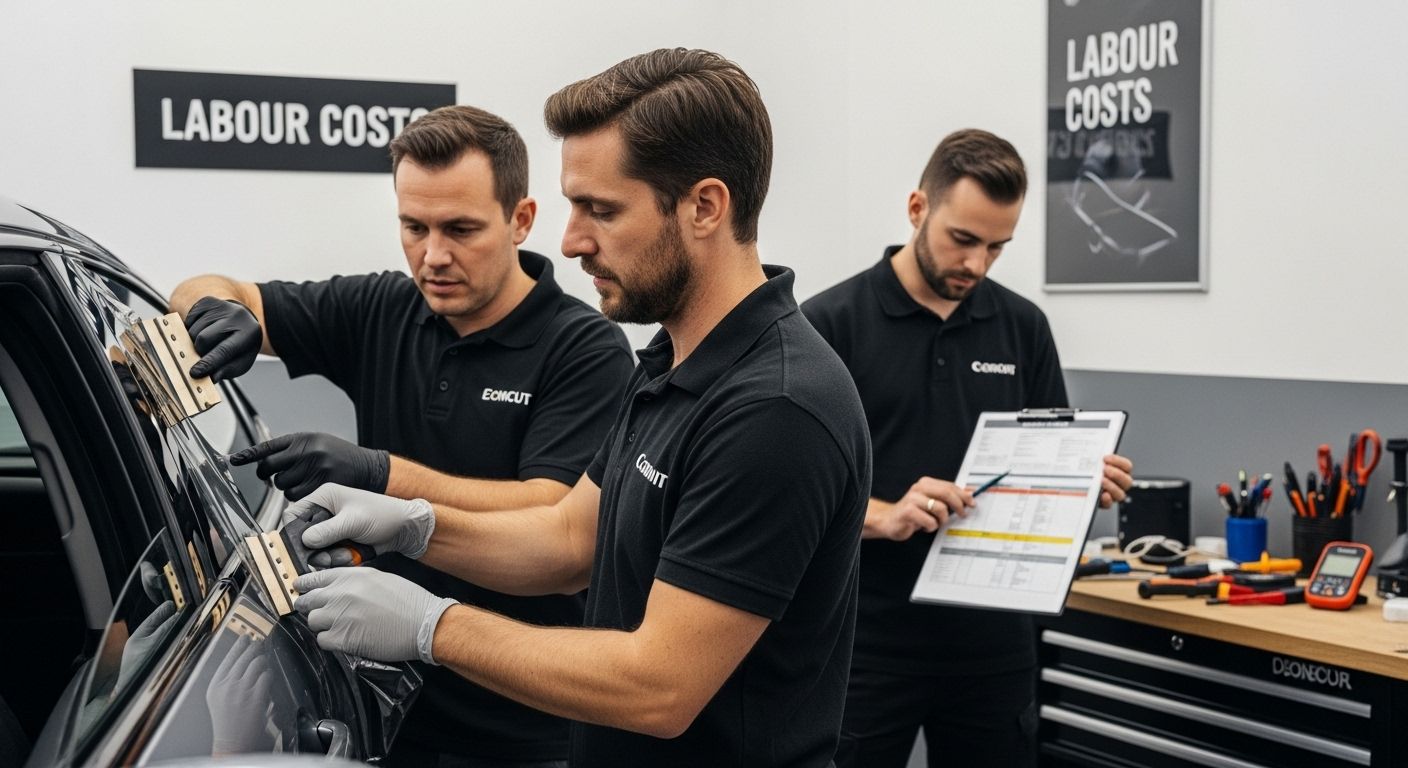
Step 4: Include Overhead and Miscellaneous Expenses
Calculating overhead and miscellaneous expenses transforms a basic project estimate into a comprehensive financial roadmap that protects your business’s profitability. Professional vehicle wrap installers recognize that these often-overlooked costs can significantly impact overall project financial performance, making meticulous tracking essential for sustainable business operations.
Overhead expenses represent the invisible infrastructure supporting your vehicle wrap business, encompassing costs that cannot be directly attributed to a single project but are crucial for operational continuity. These expenses include facility rent, utilities, insurance, equipment depreciation, administrative salaries, and ongoing maintenance of specialized tools. Experienced installers typically allocate 15-25% of total project revenue to cover these critical background expenses, ensuring the business remains financially stable across multiple projects.
Miscellaneous expenses require equally careful consideration. These can include seemingly minor but potentially significant costs such as:
- Transportation and vehicle preparation materials
- Quality control testing equipment
- Cleaning and sanitization supplies
- Software subscriptions for design and project management
- Marketing and client communication expenses
- Professional development and training resources
According to Federal Highway Administration, distinguishing between fixed, variable, and mixed costs provides a nuanced approach to financial planning. Fixed overhead costs like rent remain constant, while variable expenses such as utility consumption might fluctuate with project volume. Implement a detailed tracking system that categorizes these expenses, allowing for more precise financial forecasting and potential cost optimization.
Professional installers recommend developing a standardized overhead allocation method that distributes these expenses proportionally across different project types. This might involve creating a percentage-based calculation that adds overhead costs to each vehicle wrap project, ensuring that no single job bears an disproportionate financial burden. Digital accounting tools can streamline this process, providing real-time insights into how overhead expenses impact overall business profitability.
Final verification involves cross-referencing your overhead calculations against actual monthly expenses, adjusting your allocation strategy to maintain financial health. By treating overhead and miscellaneous expenses as strategic investments rather than mere costs, vehicle wrap businesses can create more resilient and profitable operational models.
Step 5: Review and Adjust Your Cost Estimate
Cost estimate review represents the critical final checkpoint that transforms a preliminary calculation into a robust, reliable financial blueprint for vehicle wrap projects. Professional installers understand that initial estimates rarely capture the entire project landscape, making comprehensive review and strategic adjustment essential for maintaining profitability and client satisfaction.
Systematic cost estimate review involves a multi-layered examination of every financial component, comparing initial projections against detailed documentation from previous stages. Begin by conducting a comprehensive line-item audit, meticulously cross-referencing material costs, labour estimates, overhead expenses, and miscellaneous charges. Look for potential discrepancies, unexpected variations, or areas where initial assumptions might have been overly optimistic or conservative.
Implement a structured comparison approach that considers multiple reference points:
- Historical project data from similar vehicle wrap installations
- Current market pricing for materials and labour
- Actual time and resource consumption from recent projects
- Competitive pricing within your regional market
- Potential technological or material cost fluctuations
According to U.S. Government Accountability Office, developing reliable cost estimates requires ongoing assessment and willingness to make strategic adjustments. Professional installers should remain flexible, recognizing that initial estimates are living documents subject to refinement as project details become clearer.
Risk assessment plays a crucial role in cost estimate review. Identify potential financial vulnerabilities by examining factors that could impact project expenses, such as complex vehicle geometries, unexpected surface preparation requirements, or potential material wastage. Develop contingency strategies that provide financial buffers without compromising project profitability.
Technology can significantly enhance the review process. Modern project management software offers advanced analytics that compare estimated versus actual costs in real-time, providing immediate insights into potential financial discrepancies. These digital tools enable installers to make data-driven adjustments, ensuring that each subsequent project benefits from lessons learned.
Final verification involves presenting the refined cost estimate to key stakeholders, including project managers and financial decision-makers. Transparent communication about how and why adjustments were made builds trust and demonstrates professional financial management. Remember that a well-reviewed cost estimate is not about achieving perfect prediction, but about creating a flexible, responsive financial strategy that protects both the business and the client.
Step 6: Finalise Your Project Cost Proposal
Finalising a project cost proposal represents the critical moment where meticulous preparation transforms into a professional, compelling document that communicates value to potential clients. Professional vehicle wrap installers understand that the proposal is more than a mere price list it is a comprehensive representation of expertise, transparency, and business professionalism.
Develop a clear, structured proposal document that breaks down every financial component with exceptional clarity. Begin by creating a professional cover page that includes your business logo, contact information, and a concise project title. The opening section should provide a brief executive summary highlighting the project’s scope, unique value proposition, and total investment required. This initial overview sets the tone for the detailed breakdown that follows.
Organize your cost proposal with precise, transparent sections that demonstrate comprehensive understanding:
- Detailed material breakdown with specific vinyl types and quantities
- Comprehensive labour cost calculation
- Overhead and miscellaneous expense allocation
- Potential additional service options
- Payment terms and scheduling
- Warranty and post-installation support details
According to U.S. Government Accountability Office, a reliable cost estimate requires clear documentation that supports every financial projection. Professional installers should include annotations or brief explanations that provide context for each cost category, helping clients understand the value behind each line item.
Pricing strategy plays a crucial role in proposal effectiveness. Consider implementing tiered pricing options that give clients flexibility while protecting your business margins. This might include a standard package, a premium service with additional detailing, and a basic option for budget-conscious customers. Each tier should clearly communicate the specific services and benefits included, allowing clients to make informed decisions.
Professional presentation matters significantly. Utilize clean, modern design principles with consistent formatting, professional typography, and strategic use of visual elements like charts or infographics to illustrate cost breakdowns. Digital proposal tools can help create polished, interactive documents that can be easily shared and electronically signed.
Final verification involves a comprehensive review process. Have multiple team members scrutinise the proposal for accuracy, clarity, and professionalism. Ensure all calculations are precise, language is clear, and the overall document reflects your business’s commitment to quality and transparency.
Unlock Precision and Profitability in Your Vehicle Wrap Estimates
Struggling to estimate costs for your next vehicle wrap project with confidence? Inaccurate measurements, wasted vinyl, and unplanned setbacks can quickly erode profits, especially when material calculation and labour estimates are off target. You already know that precise requirement gathering and waste minimisation are key themes from this guide, so why leave success to chance when there is a smarter solution?
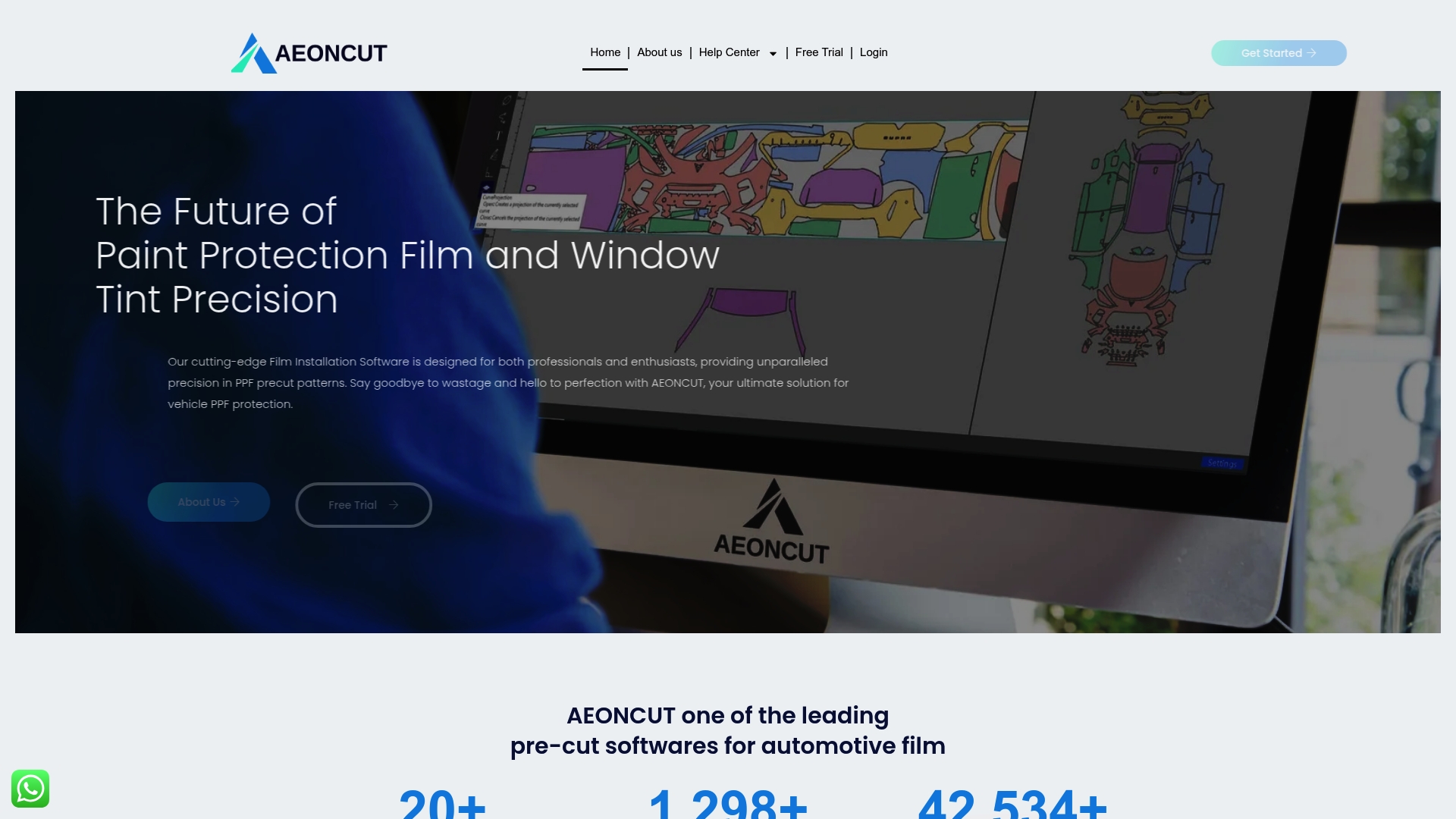
Harness the power of AEONCUT software to transform your cost estimation process. Our platform offers AI-driven auto-nesting, a vast and regularly updated pattern library, and exact pre-cut designs that reduce errors and save up to 20 percent on material costs. Professionals who want an edge choose AEONCUT for its accuracy, efficiency, and real-time cloud updates. Now is the moment to boost your bottom line with proven digital tools. Visit AEONCUT and discover how you can sharpen your estimates and protect your profit on every single project.
Frequently Asked Questions
What factors should I consider when estimating project costs for vehicle wraps?
Estimating project costs for vehicle wraps involves multiple factors such as vehicle dimensions, wrap type (full or partial), surface preparation needs, material quality, and labour time estimates. Additionally, it’s crucial to assess potential risks and environmental conditions affecting the project.
How do I calculate material costs for a vehicle wrap accurately?
To calculate material costs accurately, first choose the appropriate vinyl material based on the project requirements. Measure the total surface area of the vehicle, adding a waste factor of 15-20% to account for cutting errors. Include additional materials needed, such as primer and edge sealing tapes, to provide a comprehensive overview of costs.
What is the average time required for vehicle wrap installation?
The average time for vehicle wrap installation varies by vehicle size and complexity, typically ranging between 6 to 12 labour hours. Smaller vehicles may take 6-8 hours, while larger vehicles like SUVs or trucks may require 10-14 hours, including time for surface preparation.
How should I account for overhead and miscellaneous expenses in a vehicle wrap project?
Overhead costs should encompass expenses that support business operations, such as rent and utilities, typically allocated at 15-25% of total project costs. Miscellaneous expenses, like transportation and cleaning supplies, should also be tracked closely to ensure comprehensive financial planning.
Recommended


